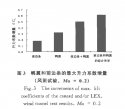Would it really be significantly more preferable for the lighter weight next generation fighter jet to only use a single engine instead of two?
I read elsewhere how it might be a large reason for the authorities hesitating on further developing the Shenyang FC-31 with its twin engines, where higher forecasted costs make it economically unfeasible for manufacturing in large numbers and eventually replacing the Chengdu J-10 in the future. I suppose this would be assuming that maintenance for a single more powerful engine in each new airframe uses comparably less resources, as it comes down to managing expenditures for a mass production stealth fighter jet.
I read elsewhere how it might be a large reason for the authorities hesitating on further developing the Shenyang FC-31 with its twin engines, where higher forecasted costs make it economically unfeasible for manufacturing in large numbers and eventually replacing the Chengdu J-10 in the future. I suppose this would be assuming that maintenance for a single more powerful engine in each new airframe uses comparably less resources, as it comes down to managing expenditures for a mass production stealth fighter jet.

